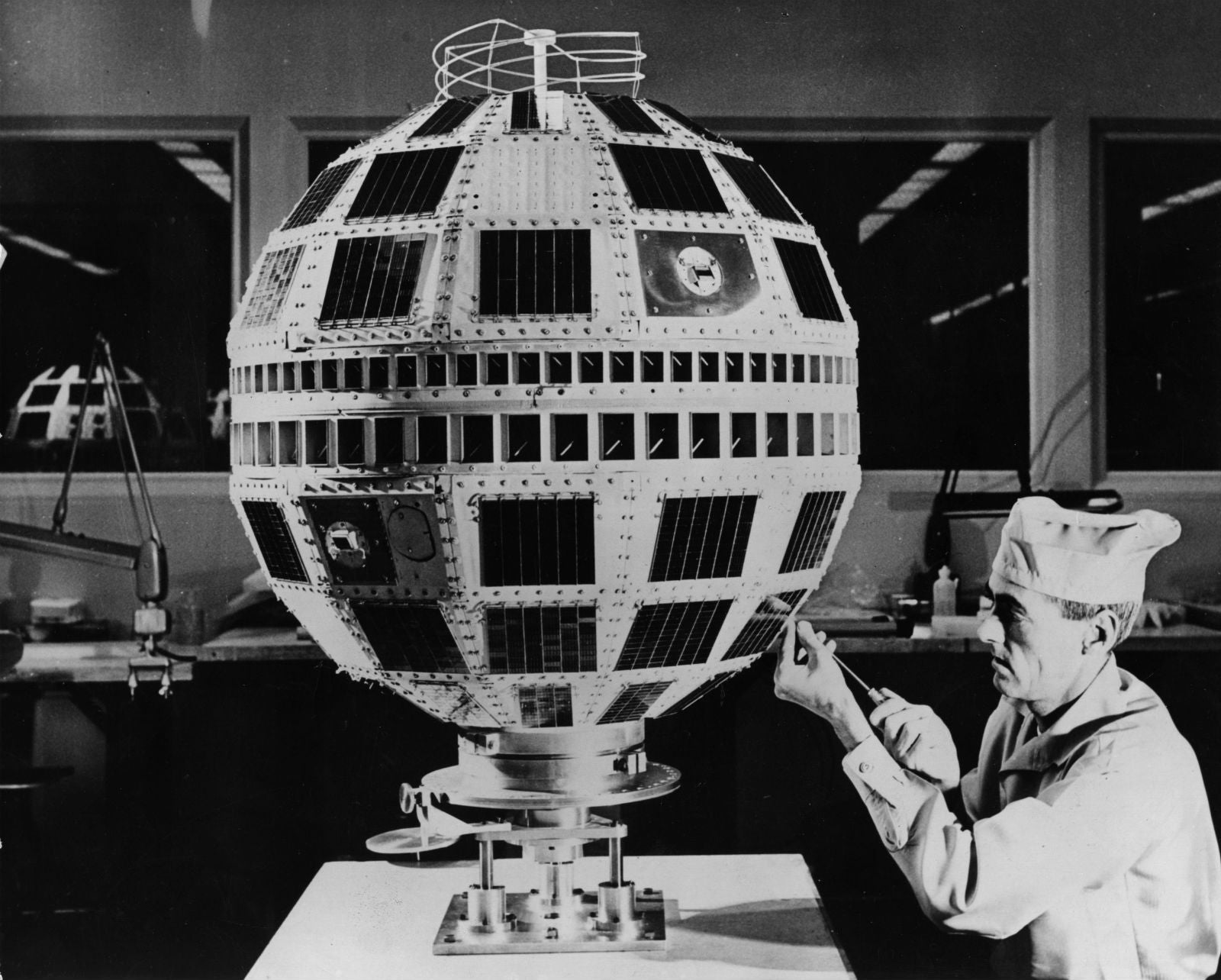Welcome to DU!
The truly grassroots left-of-center political community where regular people, not algorithms, drive the discussions and set the standards.
Join the community:
Create a free account
Support DU (and get rid of ads!):
Become a Star Member
Latest Breaking News
General Discussion
The DU Lounge
All Forums
Issue Forums
Culture Forums
Alliance Forums
Region Forums
Support Forums
Help & Search
General Discussion
Related: Editorials & Other Articles, Issue Forums, Alliance Forums, Region ForumsThe Experimental Satellite that Gave Us Live International Television
http://gizmodo.com/the-experimental-satellite-that-gave-us-live-internatio-1546502982
Throughout the 1950s, broadcast television was limited to domestic transmissions simply because we didn't have a means to relay signals far enough to span the vast expanse of the Atlantic Ocean. It wasn't until NASA shot Telstar, an unproven, newfangled "active" communications satellite into orbit in 1963, that mass media truly become an international phenomenon.
Science-fiction writer Arthur C. Clarke may be credited with first envisioning an active satellite (one that "actively" re-transmits signals, not just reflect them) in 1945 but it was John Pierce of Bell Telephone Laboratories that proved they could work in his 1955 paper "Orbital Radio Relays" in the journal, Jet Propulsion. However, it took five years of cajoling his management—during which time Soviet Russia launched Sputnik and started the Space Race—and the formation of NASA for Pierce's idea to come to fruition.
In January 1960, AT&T, NASA, Bell Telephone Labs, GKO (a British telecom), and National PTT (a French telecom) all entered into an agreement to develop satellite communications over the Atlantic Ocean by building, launching, and operating an experimental satellite based on Pierce's design. Bell Labs would build the satellite, NASA would launch it, and the telecoms would be responsible for its operation. This sort of public-private cooperation was unheard of in the fledgling aerospace industry and would become the first privately sponsored space launch in history.
InfoView thread info, including edit history
TrashPut this thread in your Trash Can (My DU » Trash Can)
BookmarkAdd this thread to your Bookmarks (My DU » Bookmarks)
5 replies, 672 views
ShareGet links to this post and/or share on social media
AlertAlert this post for a rule violation
PowersThere are no powers you can use on this post
EditCannot edit other people's posts
ReplyReply to this post
EditCannot edit other people's posts
Rec (3)
ReplyReply to this post
5 replies
 = new reply since forum marked as read
Highlight:
NoneDon't highlight anything
5 newestHighlight 5 most recent replies
= new reply since forum marked as read
Highlight:
NoneDon't highlight anything
5 newestHighlight 5 most recent replies
The Experimental Satellite that Gave Us Live International Television (Original Post)
LiberalArkie
Mar 2014
OP
And a hat tip to Johannes Kepler for figuring out why we can put one up there without it falling
Brother Buzz
Mar 2014
#3
Baclava
(12,047 posts)1. look at us now

Blue_Tires
(55,445 posts)2. Looks like the Death Star?
Baclava
(12,047 posts)5. You should see it all in motion
Brother Buzz
(36,424 posts)3. And a hat tip to Johannes Kepler for figuring out why we can put one up there without it falling
And he figured it out without the benefit of a slide rule or pocket calculator, like, four hundred year ago.
hunter
(38,311 posts)4. It's life was very short because of nuclear weapons testing in space.
From James Early, one of the engineers:
At that time, the presence of the van Allen radiation belts in the earth's magnetosphere was known. These belts were regions in which electrons and ions, created by ionizing radiation from outer space, orbited back and forth between north and south along the magnetic field of the earth, coming closest to earth above the two magnetic poles and being most distant from earth above the equator. The concentrations and energies of these particles were known roughly from satellite observations, ground data, and theory. The device engineering was such that the satellite should have had a life of many years despite this radiation.
Unanticipated by the planners, and unknown to them, I believe, was that a hydrogen bomb was to be exploded in the upper atmosphere (the "Starfish Prime" test) on July 9, 1962. The Telstar launch was scheduled for the early hours of July 10, 1962. Both launches went per schedule. The bomb fired and Telstar worked.
The bomb, however, gave rise to enormous numbers of high energy electrons and ions, a substantial fraction of which went into the van Allen belts. These swamped completely the normal van Allen belt populations, and caused noticeable radiation damage. Loss of control of the satellite repeater occurred first in August. Painstaking and brilliant analysis by the circuit and system engineers identified the specific point of failure and provided revised commands which effectively bypassed the failed circuit, thus restoring control and usefulness of the satellite until continuing radiation damage caused final failure a few weeks later.
http://www.smecc.org/james_early___telstar.htm
The Cold War messed up a lot of stuff.
http://en.wikipedia.org/wiki/Telstar